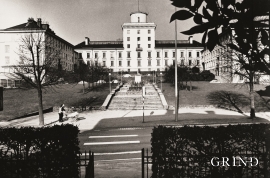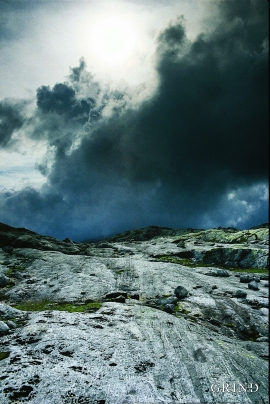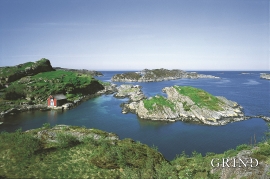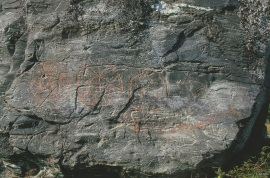- Remove Busetnad, bygd, by filter Busetnad, bygd, by
- Remove Archaeology filter Archaeology

The pioneers who discovered the natural history of Hordaland
When Professor Emeritus Knut Fægri (1909-2001) was asked to write the book's chapter about the natural science pioneers of Hordaland, he answered unequivocally, "yes". It was one of the last things he wrote before he died, at the age of 92. In typical Fægri language he presents some of the scholars who, in the time before the University of Bergen was founded, led the way in studying the natural science of The West Country.

Hordaland as high as the Himalayas- the Caledonian mountain chain
The Himalaya Mountain Chain is being formed by the Indian continental plate colliding w the Asian continent. This happens because the earth’s continental plates are constantly moving in relation to each other. Sometimes they crash together and form large collision zones or mountain chains. The collision between India and the Asian continent has created the world's highest mountain and thickest continental crust. But the creation of the Himalaya mountain chain is essentially just a repeat of what happened more than 400 million years ago when Western Norway and Greenland collided and formed the Caledonian mountain range. That mountain-building event caused quite dramatic changes in topography, climate and crustal thickness, and resulted in both volcanism and a lot of earthquake activity. In addition,

The Precambrian Era and Precambrian basement rocks
Almost nothing is as solid, unchangeable and stable as the Norwegian Precambrian basement rocks. Here, there are no volcanic eruptions or violent earthquakes that can cause natural catastrophes. But, it has not always been that way! There have been periods when glowing hot lava flowed over it or when large parts of the Precambrian basement have "taken a beating", both in Precambrian times and during the Caledonian mountain-building event.

The bedrock of western Norway
Much is hidden from us, but we know some of the main features in the history behind the different rock types and minerals that surround us. The Hordaland we experience today is the result of an exciting and sometimes dramatic geological history over many hundreds of millions of years - a result that is important for Hordaland: The bedrock influences the soil types and lays down the cultural foundation, by determining the possibilities for mining, quarrying slate, building stone and gravel for roads, and, not least, where we find mountains, valleys and fjords.

The West Country
Hordaland er en scene for naturens mange vekslinger – i topografi, berggrunn, vegetasjon og dyreliv, gjennom klimaperioder og årstider.




Kinsarvik
Kinsarvik has probably been a centre for the inner Hardanger districts back in prehistory. History tells us that in medieval times there was a marketing place, a “kaupang”, here; a connecting point in the communications between east and west. There were supposedly around 300 residents here but the place was likely wiped out in a great fire.



